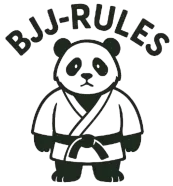A B C D E F G H I J K L M N O P Q R S T U V W X Y Z
A.
Americana – a submission that aims to force the opponent’s arm to move beyond its natural range of motion from the side control position.
Anaconda choke – a submission that uses the arms to compress the opponent’s airway from the side.
Ankle pick – a takedown technique where the attacker grabs the opponent’s ankle and takes them down.
Arm triangle – a submission that uses the arms to compress the opponent’s airway by crossing them over the neck.
Armbar – a submission that aims to force the opponent’s arm beyond its natural range of motion.
B.
Back control – a position where one fighter is on the back of the opponent, with the legs wrapped around their body.
Back take – a technique used to take the opponent’s back.
Sweep – a technique used to reverse an opponent from the guard position.
Baratoplata – a submission that uses a twisting of the opponent’s arm to force submission.
Berimbolo – a technique used to invert an opponent from the guard position.
Bicep slicer – a submission that puts pressure on the opponent’s bicep.
Butterfly guard – a guard used to control the opponent using the feet and legs.
C.
Calf slicer – a submission that puts pressure on the opponent’s calf.
Armlock – a submission that puts pressure on the elbow joint.
Closed guard – a guard where the opponent’s legs are intertwined around the attacker’s waist.
Cross-collar choke – a submission that uses the opponent’s gi collar to compress the airway.
Crossface – a technique used to control the opponent’s head using one arm.
D.
Darce choke – a submission that uses the attacker’s arm to compress the opponent’s airway.
De la Riva – a guard used to control the opponent using a leg hook.
Double leg takedown – a takedown technique where the attacker grabs both of the opponent’s legs and takes them down.
E.
Choke – a submission that compresses the opponent’s airway.
Ezekiel choke – a submission that uses a gi sleeve or the reverse of the gi to compress the opponent’s airway.
F.
Foot lock – a submission that aims to force the opponent’s ankle joint beyond its natural range of motion.
G.
Guard – a basic position where one fighter is on their back and uses their legs to control their opponent.
Guard pass – a technique used to pass the opponent’s guard.
Guillotine choke – a submission that uses the arms to compress the opponent’s airway from the front.
H.
Half guard – a position where one fighter has one leg inside the opponent’s guard.
I.
Inverted triangle – a submission that uses the legs to compress the opponent’s neck from the bottom.
J.
K.
Kimura – a submission that aims to force the opponent’s shoulder beyond its natural range of motion.
Knee-on-belly – a position where one fighter is on the opponent’s belly with one knee on their stomach.
Kneebar – a submission that aims to force the opponent’s knee joint beyond its natural range of motion.
Knee shield – a guard that uses the knee to keep the opponent at a distance and create openings for attacks.
Knee slide pass – a technique used to pass the opponent’s guard by sliding one knee between their legs.
L.
Lapel choke – a submission that uses the opponent’s belt or gi jacket to compress the airway.
Leg drag – a technique used to pass the opponent’s guard by quickly moving one of their legs.
M.
Mount – a dominant position where one fighter is on top of their opponent.
N.
North-south – a position where one fighter is on top of the opponent with their head towards the opponent’s feet.
O.
Omoplata – a submission that uses an arm lock from the open guard to force the opponent to submit.
Open guard – a guard where the opponent’s legs are not intertwined.
P.
Pressure pass – a technique used to pass the opponent’s guard by applying constant pressure.
Pull guard – a technique where the opponent pulls their opponent into their guard.
Q.
R.
Rear naked choke – a submission that uses the arms to compress the opponent’s airways from behind.
Reverse triangle – a submission that uses the legs to compress the opponent’s neck from above.
S.
Scissor sweep – a technique used to sweep the opponent using the legs.
Side control – a controlling position where one fighter is lying on the side of their opponent.
Spider guard – a guard used to control the opponent’s arms using the feet.
Sprawl – a technique used to avoid a takedown by quickly moving the legs backwards.
Submission – a technique used to force an opponent to give up due to pain or the risk of injury.
Sweep – a technique used to sweep the opponent from the guard position.
T.
Takedown – a technique used to bring the opponent to the ground.
Triangle choke – a submission that uses the legs to compress the opponent’s neck.
Turtle position – a position where the opponent is on their knees and hands, with their back facing their opponent.
U.
V.
W.
Wrist lock – a submission that applies pressure to the opponent’s wrist joint.
X.
X-guard – a guard used to control the opponent using one leg inside their legs.
Y.
Z.
